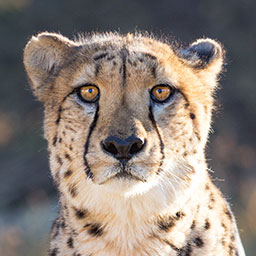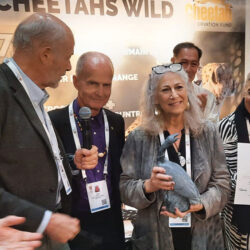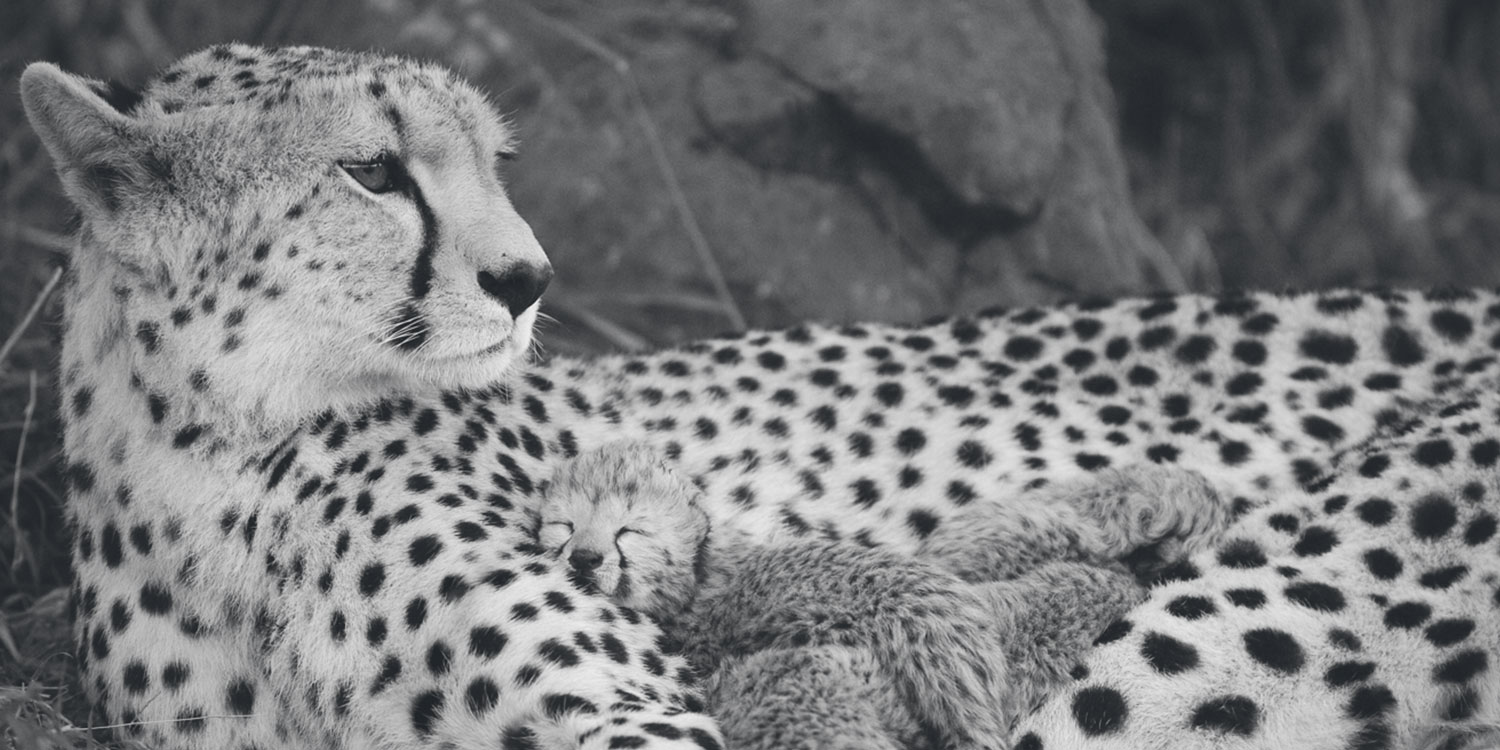Cheetah Conservation Fund Scientists Contribute to Genomic Legacy Study Published in Genome Biology; Ambassador Cheetah Chewbaaka Provides Genome for Sequencing
-

- by CCF Staff December 10, 2015
Cheetah Conservation Fund Scientists Contribute to Genomic Legacy Study Published in Genome Biology; Ambassador Cheetah Chewbaaka Provides Genome for Sequencing
WASHINGTON, D.C. (Dec. 10, 2015) – Cheetah Conservation Fund (CCF), a leading international research, education and conservation organization committed to the long-term survival of the cheetah, collaborated with scientists from St. Petersburg State University, Russia, and BGI-Shenzhen in China to formulate a detailed analysis of the African cheetah’s (Acinonyx jubatus) reference genome sequence. Published Dec. 9, 2015, in Genome Biology, this research represents one of the most significant advancements of cheetah science in modern times, according to CCF Founder and Executive Director Dr. Laurie Marker, a member of the 35-author research team. CCF’s longtime ambassador Chewbaaka, a male Namibian cheetah (now deceased), provided the genome on which the study was built.
“Sequencing the cheetah genome illuminates our understanding of this species’ evolutionary past and aids us in efforts to sustain and increase cheetah populations in their present and former range,” said Dr. Marker. “By understanding the history of the cheetah’s migration, its population bottlenecks and lack of genetic diversity, scientists and conservationists can work together to develop informed strategies to protect the species.”
The team sequenced seven cheetahs, most notably Chewbaaka, and six wild cheetahs from Namibia and Tanzania. Their findings unraveled a host of insights about the cheetah, from the species’ migration from North America to its present-day range in Africa, to a series of “population bottlenecks” where cheetah numbers were so low they were forced to mate with close relatives. This inbreeding, some of which occurred as long as 100,000 years ago, resulted in physiological and reproductive impairment the species that is still evident today. Led by PhD candidate Pavel Dobrynin and St. Petersburg University’s Theodosius Dobzhansky Center for Genome Bioinformatics Director Dr. Stephen O’Brien, CCF’s Emeritus Board Chairman, the team also included CCF’s conservation geneticist, Dr. Anne Schmidt-Küntzel.
Chewbaaka was an orphaned male cub that arrived at CCF in 1995 when he was just 10 days old. He was not suited for release back into the wild because of the young age at which he was orphaned, so he was given a permanent home in CCF’s Cheetah Sanctuary in Namibia. During his 16-year lifetime — twice the span of the average wild cheetah — Chewbaaka educated many thousands of people who visited CCF and millions more through numerous appearances in wildlife television series and documentaries. His portrait hangs at National Geographic headquarters in Washington, District of Columbia, and his role in the genome study confirms his status as the most famous and influential cheetah that ever lived.
The world’s wild cheetah population has declined by 90 percent in the last 100 years, mainly due to human-wildlife conflict and habitat loss. Genetic issues involving lack of diversity also imperil the species’ ability to survive, and they will continue to do so as more than two-thirds of remaining populations are so small breeding with close relatives occurs. As fewer than 10,000 wild cheetahs remain in 22 African countries and less than 100 of the Asiatic sub-species are found only in Iran, the world’s cheetah population is at great risk of extinction.
“Although human intervention has caused many problems for the species, humans have the ability to change the cheetah’s future. When dedicated and talented individuals like the 35 scientists on this team come together to work on solutions, there is hope for survival,” said Dr. Marker.
Press Contact:
Susan Yannetti
[email protected]
(202) 716-7756
Related Reading


